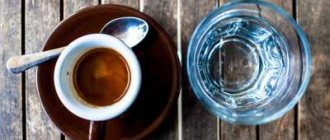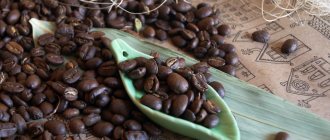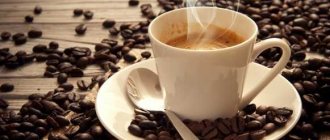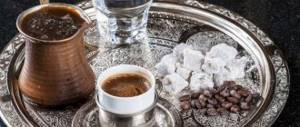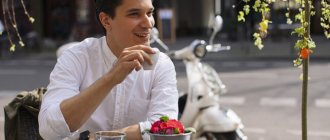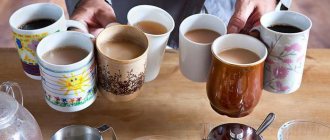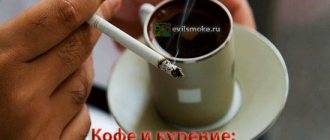Many people know or have at least heard that caffeine is harmful to health. But not everyone realizes that caffeine does not have the best effect on beauty: dull complexion, dehydrated skin, brittle nails - all this can result from excessive consumption of caffeine-containing products. The insidious caffeine is found not only in coffee, so beloved by many, but also in black and green tea, Coca-Cola and cocoa. However, the tradition of drinking a cup of hot drink at a meeting/on a work break/evening at home is so firmly rooted that many people ask the question: what then to drink if there is no coffee or tea?
Blooming Sally
It is also called fireweed - a drink that has a very pleasant taste and color, which has a powerful healing effect. It was this drink that was drunk in Ancient Rus'. Now on the shelves of pharmacies and eco-stores you can find a wide variety of this drink with various additives in the form of dried berries or other herbs. When choosing, be sure to pay attention to the fact that the fireweed leaf is fermented. Why is this tea so attractive to fans of a healthy lifestyle? It does not contain such negative elements as oxalic acid, purine bases and caffeine. You can write not only a separate article, but an entire book about the benefits of fireweed. The main advantages of tea are that it contains a large number of macro- and microelements, improves immunity, alkalizes the blood and has cleansing properties, useful not only for female beauty, but also for male strength.
When is caffeine in tea dangerous?
The so-called tea theine does not act as sharply as coffee caffeine, but creates a longer lasting invigorating effect.
Caffeine stimulates the heart muscle, and in large doses can increase blood pressure and can be dangerous for hypertensive patients, since the effect of caffeine on blood vessels can cause a jump in blood pressure. Dry leaves contain more caffeine than coffee beans, but significantly less is needed to brew a cup of drink. Therefore, where there is more caffeine - in tea or coffee - depends on the specific drink, as well as the method of its preparation.
Tea contains caffeine in such quantities that one cup of black leaf drink is completely safe, but the broken leaf variety “broken” has a higher concentration of the psychostimulant.
Rooibos tea

Rooibos tea is not just an aromatic and tasty drink, but also very healthy. This tea contains antioxidants that have anti-aging properties, and a number of vitamins (C, E, P, A) and trace elements such as potassium, fluorine, zinc, iron and many others. Rooibos tea has a tonic effect, strengthens the immune system, and fills the body with vitality. Despite its tonic effect, rooibos does not contain caffeine. Thanks to this, it can be consumed at any time of the day and in any quantity. Rooibos is not contraindicated for elderly people suffering from high blood pressure, small children, pregnant and nursing mothers. Rooibos infusion is recommended for babies for insomnia and colic. Some people don’t like this tea – it’s a matter of taste, but there is another possible reason – poor quality raw materials. Here is an example of a pleasant drink - organic rooibos tea with orange and mint, which has not left anyone indifferent.
Popular varieties

Drinking decaffeinated drinks doesn't mean you have to give up the pleasant taste or aroma. You can still enjoy a variety of drinks at any time of the day without worrying about possible insomnia. Here are some of the popular ingredients and tea varieties that are suitable for creating a decaffeinated, aromatic drink:
- Jasmine.
One of the world's most popular components for flavored mixtures. Particularly beloved by the Japanese, jasmine has a subtle, sweet aroma that can induce relaxation and a sense of calm. Many people prefer to use decaffeinated green tea as a base. You can collect your own jasmine flowers from your garden and dry them for later brewing. In addition, today dried flowers of this fragrant plant are sold so that you can prepare a natural and healthy drink in a matter of minutes. - Chamomile and lemon.
They are considered an ideal natural remedy for easing digestion, treating insomnia and simply relaxing after a long day. Make a tea with just these two ingredients and you won't have to worry about caffeine in your diet. You will receive a light, floral decoction with a sharp taste and a lot of useful properties. Add a few orange slices and a teaspoon of honey to the cup for an extra, pleasant aroma. - Mint
. Brew dry or fresh peppermint leaves in boiling water, and add tea leaves if desired. This way you will get a relaxing and soothing drink that you will remember with its sweet taste, refreshing aroma and fresh aftertaste. - Rooibos masala.
In Hindi, “masala” means “spice mixture”. This drink is usually prepared using a variety of spices that are steeped in hot water. Some masala recipes call for the addition of black tea leaves, so be careful if you're looking for a caffeine-free recipe. You can use decaffeinated tea leaves or choose rooibos as a natural and delicious alternative. Stores sell ready-made mixtures for quick and easy brewing of masala. But if you are a true lover of spices and spicy tastes, it is better to collect the necessary spices yourself to prepare aromatic masala with rooibos. Add ginger, cardamom, cinnamon, cayenne, nutmeg, fennel and star anise to the cup for a rich and complex drink. - Rooibos Earl Gray.
If you want to stop drinking caffeine, that doesn't mean you have to give up your favorite British tea, Earl Gray. Thanks to experienced tea masters, you can purchase a natural and healthy analogue. It is made from the red rooibos plant, which is native to South Africa. The resulting drink does not contain caffeine, but at the same time has notes of bergamot and citrus in its aroma. - Thai ginger.
The drink is prepared by steeping ginger root in hot water. There are no tea leaves added to this recipe, so you don't have to worry about the psychoactive substances in your cup. Add a slice of lemon and a little honey to your tea to tone down the sharp taste of the ginger root.
Herbal infusions
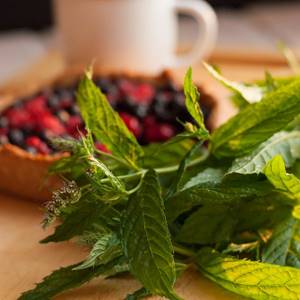
Nowadays, all self-respecting cafes have at least one herbal tea. Number one is mint tea. It should be noted that dried and fresh mint have different properties: dried mint is relaxing and soothing, while fresh mint is tonic! In a cafe you can often ask for fresh mint tea, and even if it’s not on the menu, then mint is always available for cocktails and, as a rule, they will accommodate you halfway.
Of course, in addition to mint, there is a huge selection of both herbal teas and mono herbal teas, which you can either purchase at any supermarket or prepare yourself. You can dry both wild plants and garden herbs. This topic is very broad and interesting. And if she captivates you, then you will definitely find your favorite combination. Maybe it will be: chamomile, primrose, fennel, lemon balm, St. John's wort, hibiscus? But be careful with herbs during pregnancy! Since during this period, an overdose of even such common herbs as chamomile and mint can be dangerous.
Types of tea by origin (countries)
The taste of the finished drink, even within the same type of tea, varies greatly depending on the terroir, region and climate. Below are the top ten producing countries (according to the British website) and five more countries whose products are available to Russian buyers. Of course, in fact, this is far from a complete catalog - this list includes only the most notable participants in the tea market.
China
The birthplace of tea and one of the most advanced producing countries of this drink. China consistently remains the leader among suppliers - about 40% of the world market share, which is about 2.4 million tons of tea per year. It is mainly grown in the provinces of Yunnan, Guangdong and Zhejiang. Chinese tea is considered one of the best in the world; it is represented by all six varieties, including yellow tea, which is created only in the Middle Kingdom.
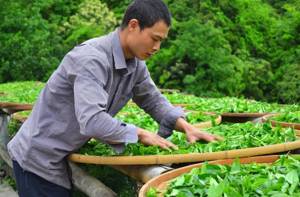
India
India produces 1.25 million tons of tea annually, which automatically puts this country in second place. The British set the pace in 1824 to compete with China. The idea paid off, and over the next 200 years, India truly became a powerful rival to the Chinese tea industry, especially with regard to black tea. Two-thirds of production comes from four tea regions in northern India: Assam, Darjeeling, Dooars and Sikkim. Another third is produced in the Nilgiris and Kerala, located in southern India. Indian tea has long been very popular in Russia and inspires great confidence among buyers.
Kenya
Tea was first introduced to Kenya in 1903, and over the next 100 years, production here has grown to enormous proportions. Today, Kenya annually supplies the world market with about 500,000 tons of tea and claims to be a leading producer on a par with China and India. Kenyan tea is grown in the highlands in the east and west of the Great Rift Valley, at an altitude of 1500 to 2000 m. It is noticeably less common on the Russian market than tea from the first two countries, although it is also considered to be of very high quality.
Tea Monts “Matcha Green Japanese”, green powder, 50 g -51%
368 rub. 750 rub.
Weiserhouse tea "Pu'er (Xishuangbanna District)", pressed black, pancake, 50 g -25%
203 rub. 270 rub.
Buckwheat tea Trawa “Black” grade. Granules", 100 g -20%
472 rub. 590 rub.
Herbal tea Hempstore of Hempico “Hemp with Thyme”, large leaf, 50 g -15%
1182 rub. 1390 rub.
Tea Curtis “Dessert Tea Collection”, assorted, 30 sachets -30%
165 rub. 235 rub.
Tea Richard “Royal Tea Collection”, assorted, 120 sachets -30%
399 rub. 570 rub.
Black tea with additives “Taiga harvest” 90 rub.
Zavarkin tea “Indian black tea” black flavored, small leaf, 25 bags 30 rub.
Even more offers on TEA.ru
Sri Lanka
Sri Lanka produces just under 350,000 tons of tea per year (about 17% of the world's harvest). It all started in 1867, when the British tried to create another competitor to China on the site of failed coffee plantations. Since then, the country has been producing some of the best teas in the world, which have no analogues. They are grown mainly in 6 regions: Uva, Dambulla, Uda Pussellawa, Nuwara Eliya, Kandy and Ruhuna. The height difference of tea plantations varies greatly, which provides a varied palette of tastes.
Türkiye
Turkey grows about 250,000 tons of tea annually, producing mostly black varieties, including black powdered tea. At the same time, a larger volume of production remains in the country.
Vietnam
Since the French introduced tea leaf culture to the Vietnamese during their colonial rule, the country has become the sixth largest tea producer. Today, Vietnam supplies about 240,000 tons of raw materials per year from plantations located mainly in Yen Bai Province in Northern Vietnam. The range includes several types of tea - green, black and white.
Indonesia
Indonesia produces about 144,000 tons of tea annually. The Indian Assam tea bush was first brought to this country in the 1700s by the Dutch East India Company. The suitable climate allowed the new crop to take root and become an important part of the Indonesian economy. Tea is grown on the islands of Java and Sumatra. In Java, the highest quality aromatic product is produced in August and September. In Sumatra, the harvest can be harvested all year round. Many manufacturers like to complement their blends with soft and delicate Indonesian teas.
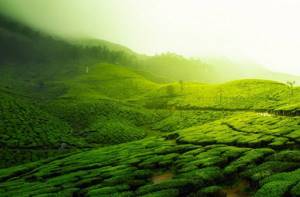
Argentina
Argentina produces just under 90,000 tons of tea per year. This is mainly black tea of Indian origin, as well as traditional Argentine mate. Classic tea began to be grown in Argentina in the 1920s, when the country's government encouraged farmers to experiment with various new crops. The plantations are located in the provinces of Misiones, Corrientes, Formosa, Chaco and Tucuman.
Japan
Japan is a country where tea has great cultural significance. About 80,000 tons of this product are produced here annually (in the Shizuoka, Kagoshima and Uji regions). The history of Japanese tea began many centuries ago, when Buddhist monks brought it to their homeland. Today, the Japanese specialize mainly in the production of green tea of all types. The most popular exports are sencha and matcha, but most of the tea grown in Japan is actually consumed domestically.
Iran
Iran supplies the world with just under 75,000 tons of tea per year. Tea first appeared as a drink in this country in the 15th century, thanks to trade along the famous Silk Road, and quickly became very popular. However, large-scale production began only in the 20th century, when the first mechanized tea factory was founded.
Taiwan
The history of tea here dates back to the 18th century, when Camellia sinensis trees were first introduced to the region. Today Taiwan is the world leader in oolong production (about 20% of the total volume); black, green and white tea are also grown here. There are plantations in almost all regions of the country, but Alishan, Taitung and Yu Shan are considered the most significant.
Nepal
Tea has been grown in Nepal for several hundred years, but it is a rare and expensive product because it is produced in very limited quantities. Nepalese tea is always hand-picked (it is physically impossible to lift the equipment to an altitude of up to 2500 meters above sea level). In Russia this tea is very rare.

Azerbaijan
Azerbaijani tea has been known to the world since the beginning of the twentieth century, it was then that stable production was established in this country based on raw materials from the Lenkoran and Astara regions. In Azerbaijan, mainly black long tea is grown, which was very popular during the existence of the USSR.
Russia
Russian tea as a product appeared at the beginning of the twentieth century, during the period of the emergence of large agricultural projects in the USSR. After the collapse of the Soviet Union, the industry fell into decline and was only restored at the end of the 20th century. Today, Russian tea is produced on plantations in the Krasnodar region in volumes of about 400 tons per year. These are mainly black varieties and in very small quantities green.
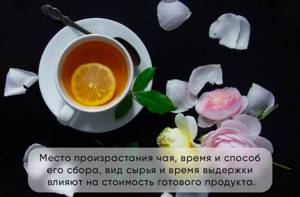
Fruit and berry teas
You can brew both dried and frozen berries. Now on sale there are both whole dried berries and dried berries and ground into powder, which speeds up brewing. But be careful: blueberry-flavored tea may contain black tea and have nothing to do with blueberries. Choose drinks that are clear in composition and of high quality! For example, sea buckthorn tea increases the body's immunity and resistance to viruses.
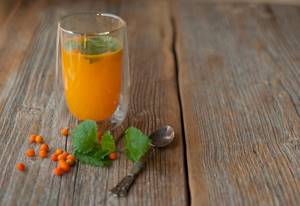
Frozen Sea Buckthorn Recipe
Ingredients: 6 tbsp. l. sea buckthorn, a small piece of ginger, 600 ml hot water, honey. Preparation: Place all ingredients in a blender. We filter. Serve with honey. It's incredibly beautiful, tasty and healthy!
From other plants (tisans)
Although only a drink based on tea leaves can be called real tea, in global terminology this word unites many drinks that are created by brewing plant components in hot water. These can be leaves, flowers, and even roots. Many tisanes are national treasures of the countries in which they appeared.
Rooibos
A traditional African drink, which is obtained from the stems, leaves and shoots of the Aspalatus lineara shrub. The leaves of this plant look like small needles. The tea drink prepared on its basis does not contain caffeine and is considered beneficial even for children. It has a delicate sweetish taste.
Mate
An ethnic tea from Paraguay, it is created from the leaves of the Paraguayan holly. Very popular in South America, it has a tonic effect because it contains caffeine (mateine). Traditionally, it is drunk from a special container made from dried pumpkin using a metal straw. It has a light yellow color and a herbaceous aroma.
Hibiscus
A tea often called red due to the bright color of the infusion. It is prepared from hibiscus flowers, does not contain caffeine, but contains a lot of vitamin C. Can be consumed by children.

Anchan
Thai tea made from blue flowers of the clitoris trifoliate. Does not contain caffeine and is considered a health drink. Gives a bright blue exotic color to the infusion.
Ku Qiao
A Chinese drink made from Tartary buckwheat, it is also called buckwheat tea. It has an indirect relation to ordinary buckwheat, since it is prepared from the seeds of another plant related to ordinary buckwheat. Does not contain caffeine.
Herbal teas (herbal teas)
The category of herbal teas includes most of the herbal drinks known to us - chamomile tea, fireweed tea, and infusion of thyme or oregano. Herbal tea can include either one component (mono-tea) or several (herbal mixture). Just a couple of decades ago, herbal tea could only be bought at a pharmacy or collected yourself at the dacha, but today any hypermarket has a section with these drinks.
All herbal teas, in turn, can be divided into five main categories:
- from inflorescences (chamomile, linden, lavender, pomegranate);
- from leaves (mint, lemon balm, thyme, raspberries, currants, strawberries, etc.);
- from roots (ginger, turmeric, dandelion, ginseng, licorice, etc.);
- from bark (oak, buckthorn, willow, etc.);
- from seeds (fennel, anise, amaranth, etc.).
Fruit and berry teas
Fruit and berry teas are made from natural fruits. Most often they have a natural sourness or sweetness, but they are never cloying. Fruit teas are rich in vitamins and do not contain caffeine, which allows them to be drunk in the evening and given to children. You can also consume them cold as a healthy alternative to carbonated drinks. Fruits and berries can be brewed either fresh or dried.
Herbal tea Hempstore of Hempico “Hemp with Thyme”, large leaf, 50 g -15%
1182 rub. 1390 rub.
Tea Curtis “Dessert Tea Collection”, assorted, 30 sachets -30%
165 rub. 235 rub.
Tea Richard “Royal Tea Collection”, assorted, 120 sachets -30%
399 rub. 570 rub.
Black tea with additives “Taiga harvest” 90 rub.
Zavarkin tea “Indian black tea” black flavored, small leaf, 25 bags 30 rub.
Tea Richard “Royal Degustation Set Tea Assortment | Goldfinch”, assorted with additives, 32 sachets -30%
232 rub. 331 rub.
Konigin Herbarium “Healthy Sleep” tea, green with additives, 20 sachets -25%
74 rub. 98 rub.
Tea Richard “Royal Tea Assortment”, assorted, 9 sachets -30%
70 rub. 100 rub.
Find your favorite tea on TEA.ru
Chicory
One of the most common “substitutes” for coffee. For passionate coffee lovers, this may sound like a mockery. However, for some, chicory becomes a real salvation during the period of giving up coffee. Chicory is the dried and roasted root of the plant of the same name. Chicory contains inulin, which lowers blood sugar levels. Chicory contains such important minerals for the skin as calcium, potassium and magnesium, as well as vitamins A, E, B1, B2, B3, C, PP. These vitamins and minerals accelerate the restoration of collagen fibers and tone the skin. And these are just some of the beneficial properties of chicory. There are various mixtures based on chicory with roasted cereals, such as “Inka”. In Estonia there is also a tradition of drinking acorn “coffee”. Typically, dried and lightly fried acorns are mixed with cereals.


